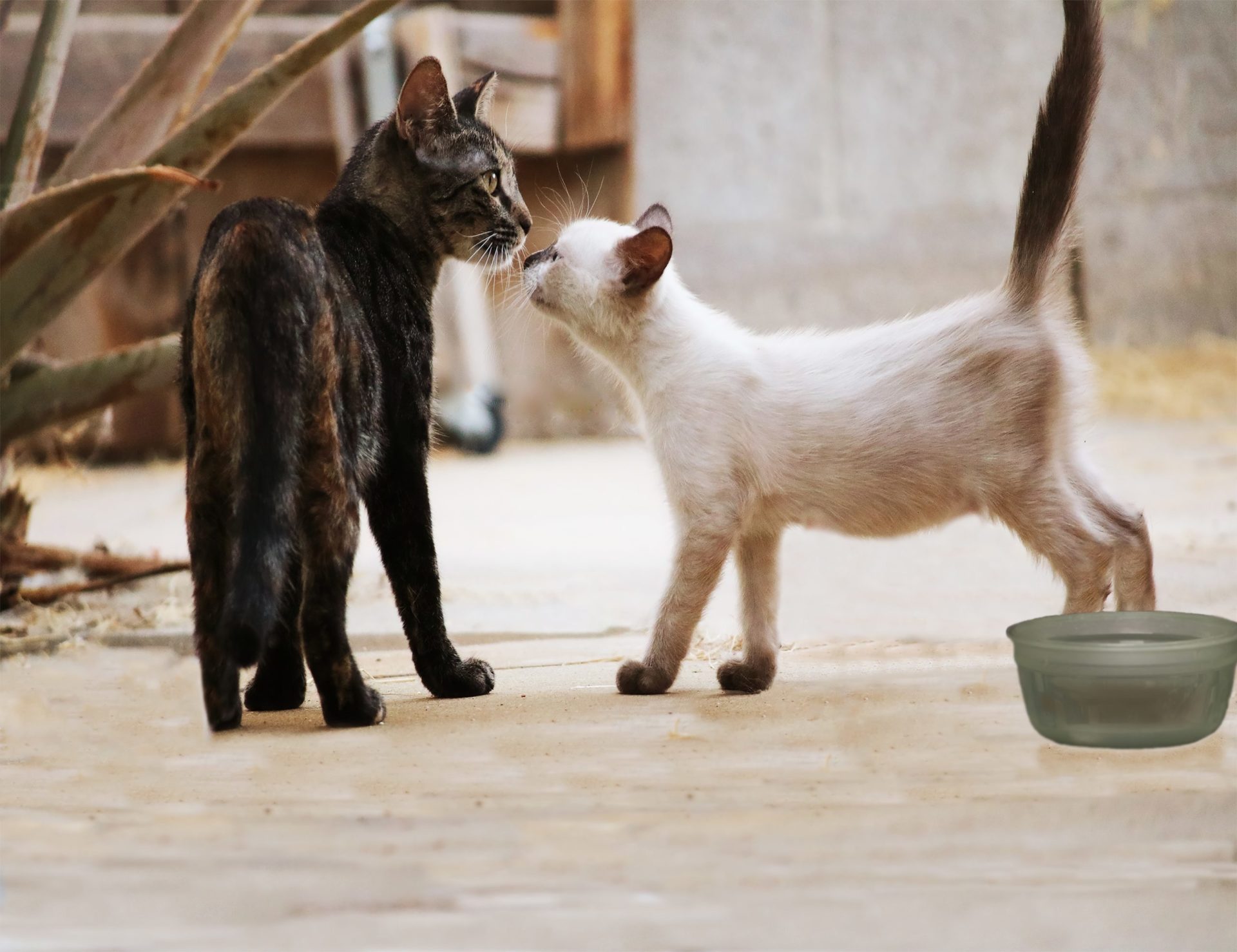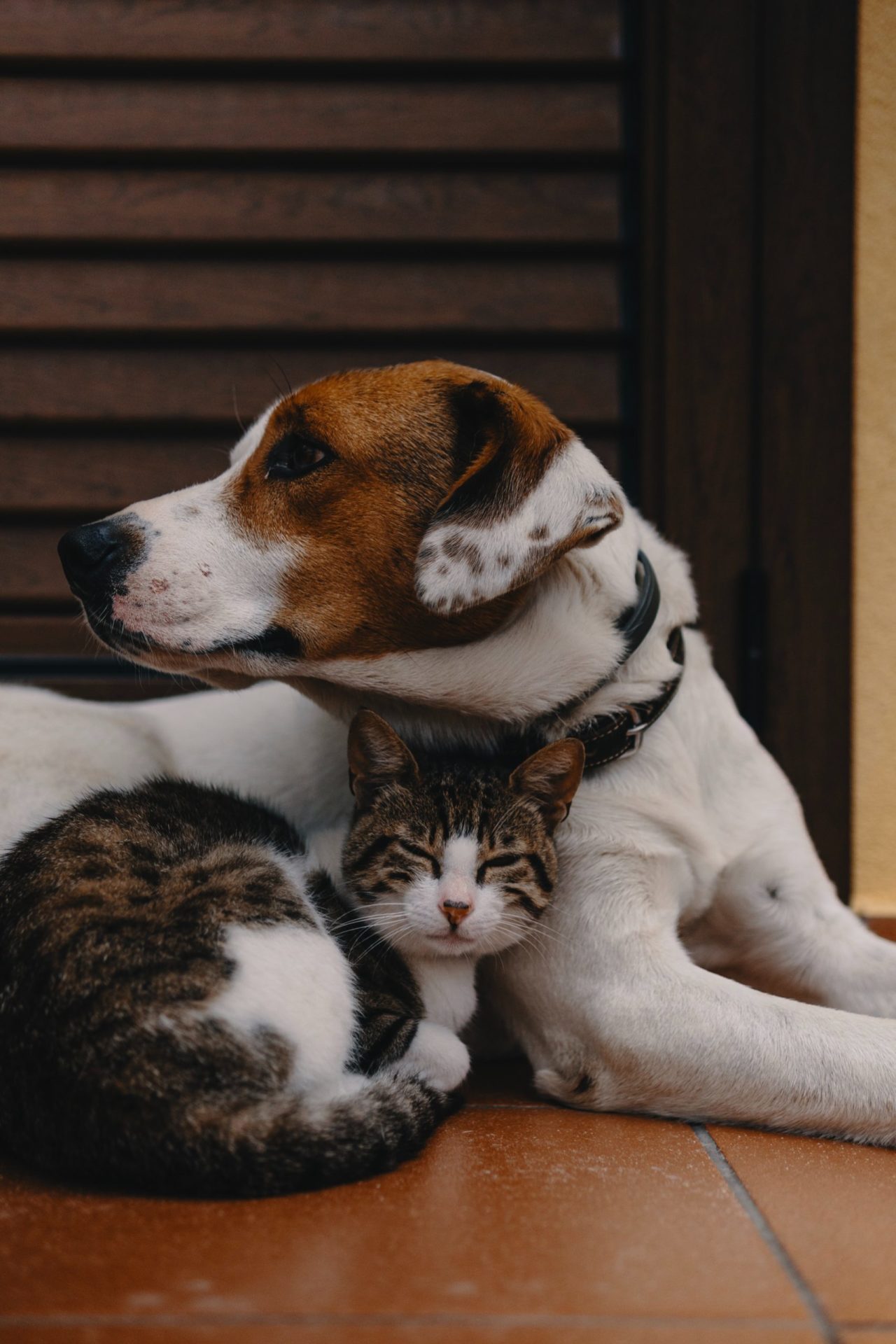If you are adopting a new cat or kitten, you should bear in mind that a change in home environment can be a stressful time for a feline. Even the most confident kitten can be spooked but unusual noises, so it can often take a cat or kitten a few weeks to fully settle into their new home.
By following these tips you can ensure that the process is as stress free as possible for all involved.
Provide A Safe Room
It’s important that you have your home ready to receive your new addition in advance of them coming home for the first time. Allocate a room, one that is secure, quiet and contains everything they need such as:
- An area for food and a separate area for water
- A litter tray placed away from the food and water area, which is private but accessible
- A place to sleep – or even better a choice of places
- Access to a raised area, such as a work surface or window sill
- A place to hide like a cardboard box
- A scratching post
- A few cat toys, perhaps scented with catnip
Settling in
When you first arrive home, put your cat carrier in the allocated ‘safe’ room and open it up. Allow the cat or kitten to explore their new environment in their own time to help ease any anxiety. If an adult cat seems especially nervous, it may be beneficial to leave the room for a while.
If it’s a kitten that you have adopted, don’t leave them alone until you are certain they can’t become trapped or hurt themselves in their new environment. Sit with them and encourage them to explore.
Newly adopted cats and kittens will soon find a hiding place and may refuse to come out. This is completely normal. Do not force them out, just leave fresh food and perhaps some treats nearby for them, ensure the litter tray is accessible and give them some space. Pop back in from time to time, maybe sit with them for a while and talk to them. This will help them get used to your voice and your scent.
A pheromone-emitting plug in such as Feliway can help a cat feel more comfortable too.
Exploring Further Afield
Once your new addition is showing signs of becoming more confident, you can start to allow them to explore the rest of the house. Keep things calm and quiet. Ensure the house is safe – make sure all windows, external doors and cat flaps are closed, toilet lids are down and chimneys are blocked off. Allow them to explore their new home in their own time.
If yours is to be an outdoor cat, the next step is to introduce them to the garden. A newly adopted cat should ideally be kept inside for two weeks to help establish that your house is their new home and a kitten should not be allowed outside until a week after their vaccinations.
Before allowing them outside you should ensure that:
- They are microchipped and have a quick release collar for quick identification if they become lost.
- They are neutered. Kittens can be neutered from 4 month.
- They are up to date with all their vaccinations.
- You garden is kitten proof. Ponds should be covered over and chemicals such as weed killer, are put away.
It’s a good idea to accompany your cat and especially your kitten outside at first to provide encouragement and reassurance.
Introducing Your New Cat To Your Resident Cat
Introducing cats to one another can be a tricky business and needs to be handled in the right way. It should never be rushed and can sometimes take weeks and weeks for cats to accept one another, depending on the temperament of the cats and their previous experiences. A bad start can lead to a lifetime of problems and conflict. Follow this advice to help your cats to bond.
- Once your new cat is eating and toileting normally in its ‘safe room’, a good first step is to get your cats eating on opposite sides of the same door. They then start to associate something pleasurable (eating) with the scent of the other cat. Another tip is to attach toys to either end of a shoelace and feed it under the closed door. The cats can then play together without being face to face.
- The next step is to fully introduce them to each other’s scents. Swap the newcomer and resident cat’s sleeping blankets over for a few days and then swap them back again.
- You can then progress to allowing the newcomer to explore the house while containing your resident cat in the ‘safe room’. This allows the new cat to become familiar with the new surroundings without being frightened by other pets.
- The final step is allowing them to meet face to face. This can initially be done by containing the cats in separate carriers facing each other, allowing them to see each other ‘face to face’ for a short period of time each day.
After any signs of aggression have stopped, this can then be progressed to meeting at mealtimes. The cats should be fed at the same time but their feeding areas should be at opposite sides of the room. Some growling and hissing should be expected at this point as they have to establish a pecking order but if a conflict is looking likely, separate them and try again when they are both calm.
Gradually build up the amount of time the cats spend in each other’s company so that neither animal becomes fearful or aggressive, although mild forms of this behavior is to be expected. Don’t leave them alone together unattended (e.g. at night) until they have fully accepted each other.
Because of the nature of cats, some aggression may still remain in spite of your best efforts and if this is the case it’s important to ensure that each cat has space away from the other. This includes separate eating areas and litter trays.
Introducing Your New Cat To Your Dog
The introductory phases are the same for introducing your new cat to a resident dog. Slowly and patiently is the way to help ensure a good bond is achieved.
- Once they have become used to each other’s scent by swapping bedding, they should meet face to face with the dog on a lead on the opposite side of the room. The dog is likely to want to play with the cat and it’s important for the dog to learn that the cat or kitten is not a toy. Short meetings with the dog staying controlled on a lead are best to start with and then gradually build up the time together as they become more comfortable with each other.
- You might want to keep your dog on a lead whenever the cat is free in the house during the introductory phase and make sure your cat has somewhere they can escape from the dog. Somewhere up high, out of reach is usually favorable.
- Don’t leave your dog and cat alone together until you are certain your cat will be safe. A dog can easily kill or severely injure a cat while thinking that it’s playing.
If introductions don’t go smoothly, consult a professional. Animals can be badly hurt in fights and the longer the problem exists, the less likely it is that it will be resolved.
If you have any concerns over settling in a new pet, need advice on neutering or vaccinations or have any other worries regarding your pet, please contact us.
St Kitts Veterinary Centre: 01252 844044
Basingstoke Veterinary Centre: 01256 844944
Crookham Park Veterinary Centre: 01252 913990
Firgrove Veterinary Centre: 01252 877799







